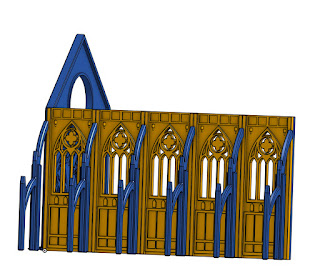The process of making moulds can be pretty easy if you are interested in casting dental plaster and don't intend to use a pressure pot or vacuum chamber. I decided to create a full set of master bases for use across my 40k and 30k armies. I won't use these for all of my miniatures, but it is extremely nice to have a set of bases ready to go whenever I want to create some. An added benefit is that while my regular bases are normally fragile, the solid dental plaster bases are not. These are incredibly durable. Also, since my bases are supposed to be concrete, as they get scratched the grey color material underneath looks like fresh cracked cement adding to the overall effect.
Step 1: Make master bases
Step 2: Build mould boxes
Step 3: Spray a coat of primer over the boxes to ensure that any super glue used during construction of the bases or the boxes is covered. Superglue will cause the silicone to cure badly, leaving soft uncured goop where it touches.
Step 4: Mix your silicone. I used two different types of silicone here, one that cures in 6 hours and another that cures in a slightly shorter time. I believe the purple dense one is OOMO 30.
Step 5: After waiting over night, release the silicone from the mould. Try to save your masters. They can be used if desired. (I won't, my masters get dumped straight into storage)
Step 6: Using Excalibur dental plaster start pouring bases. The key to a nice flat base is to overfill it and then after the plaster has started to separate from the water and sink into the moulds, to gently scrape the surface using a flat edge.
Step 7: Paint. The small 25mm base on the right is one of the new bases. The 50mm base on the left is one of my old bases from several years ago. The 25mm base wasn't even primed. That cement is raw plaster with a dose of Secret Weapon Miniatures Green Earth pigment washed over the top. I then went back and scraped the base with an x-acto knife to add some designs.
























